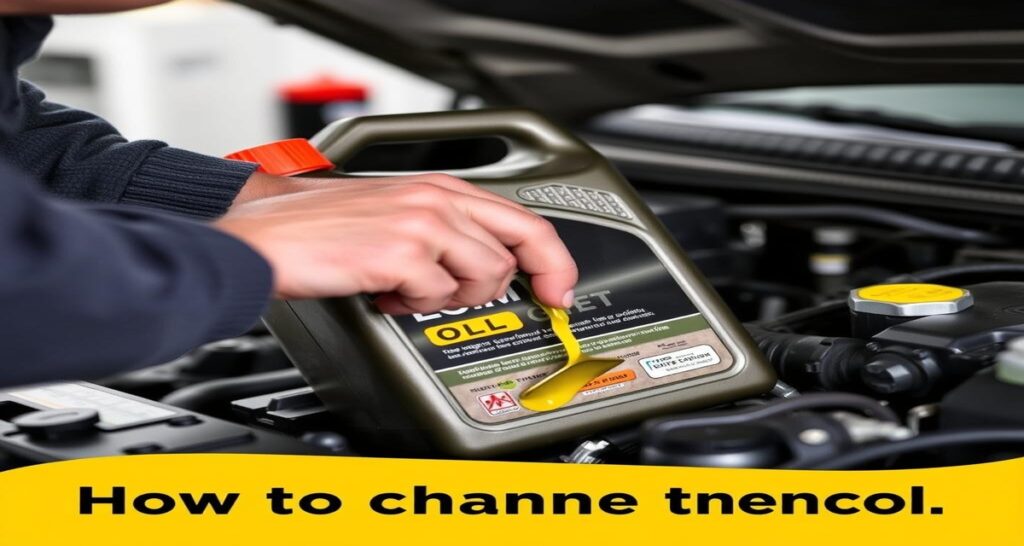Changing the engine oil in your vehicle is a crucial maintenance task that can help extend the life of your car and prevent costly repairs. Regular oil changes can also improve your car’s performance, fuel efficiency, and overall health. In this article, we will guide you through the process of changing engine oil at home, making it easy and convenient for you to take care of your vehicle’s maintenance needs.
Why Change Engine Oil at Home?
Changing engine oil at home can be a cost-effective and convenient way to maintain your vehicle. By doing it yourself, you can save money on labor costs and have more control over the process. Additionally, changing oil at home allows you to choose the type and quality of oil that suits your vehicle’s needs, giving you more flexibility and peace of mind.
Benefits of Changing Engine Oil at Home
Some of the benefits of changing engine oil at home include:
- Cost savings: By doing it yourself, you can save money on labor costs.
- Control: You have more control over the process and can choose the type and quality of oil.
- Flexibility: You can choose the best oil for your vehicle’s needs, giving you more flexibility and peace of mind.
- Convenience: Changing oil at home can be done at your own pace and schedule.
In the following sections, we will provide a step-by-step guide on how to change engine oil at home, including the necessary materials, tools, and precautions to take. With this guide, you’ll be able to change your engine oil like a pro and keep your vehicle running smoothly and efficiently.
How to Change Engine Oil at Home: A Step-by-Step Guide
Changing your car’s engine oil is a crucial maintenance task that can help extend the life of your vehicle. While it’s recommended to have a professional mechanic do the job, it’s also possible to do it yourself at home. In this article, we’ll walk you through the process of changing engine oil at home, from preparing the necessary materials to disposing of the used oil.
Why Change Engine Oil?
Engine oil plays a vital role in keeping your car’s engine running smoothly. It lubricates the moving parts, prevents corrosion, and helps to cool the engine. Over time, the oil breaks down and becomes less effective, which can lead to increased wear and tear on the engine. Changing the oil regularly can help to:
- Prevent engine damage
- Improve fuel efficiency
- Reduce emissions
- Extend the life of the engine
What You’ll Need
To change the engine oil at home, you’ll need the following materials: (See Also: Can I Leave A Car Battery In My Car)
- Oil drain pan
- Socket wrench or ratchet and socket
- Oil filter wrench (if applicable)
- New oil filter
- Enough motor oil to fill your car’s engine
- Rags or paper towels
- Funnel
- Disposal container for used oil and filter
Preparing the Vehicle
Before you start, make sure the vehicle is parked on a level surface and turned off. Engage the parking brake and put the transmission in park (automatic) or first gear (manual). Turn off the engine and let it sit for a few minutes to allow the oil to drain back into the oil pan.
Locating the Oil Drain Plug
The oil drain plug is usually located at the bottom of the engine, near the front of the car. It may be on the driver’s side or passenger’s side, depending on the make and model of your vehicle. Consult your owner’s manual or look for a diagram to determine the location of the oil drain plug on your specific vehicle.
Draining the Oil
Use a socket wrench or ratchet and socket to remove the oil drain plug. Be prepared for the oil to start draining out quickly, so have the oil drain pan positioned under the plug to catch the oil. Let the oil drain completely before proceeding.
Replacing the Oil Filter
If your vehicle has a cartridge-style oil filter, you’ll need to remove it and replace it with a new one. Use an oil filter wrench to loosen and remove the filter. Dispose of the old filter responsibly. Install a new oil filter by hand tightening it in a clockwise direction.
Filling the Engine with Oil
Use a funnel to pour in the new oil. Check your owner’s manual to determine the correct type and amount of oil to use. Fill the engine slowly, checking the oil level regularly to avoid overfilling.
Replacing the Oil Drain Plug
Once the engine is filled with oil, replace the oil drain plug. Tighten it in a clockwise direction until it’s snug, but do not overtighten.
Cleaning Up
Use rags or paper towels to clean up any spills or drips. Dispose of the used oil and filter responsibly. Check your local regulations for guidelines on how to dispose of used oil and filters. (See Also: How Long To Charge Car Battery At 20 Amps)
Recap
Changing your car’s engine oil at home is a relatively simple process that can help extend the life of your vehicle. By following these steps, you can ensure that your engine is properly lubricated and running smoothly. Remember to check your owner’s manual for specific recommendations on oil type and amount, and to dispose of used oil and filters responsibly.
Key Points:
* Check your owner’s manual for specific recommendations on oil type and amount
* Dispose of used oil and filters responsibly
* Use the correct materials and tools to change the oil
* Follow the steps outlined in this article to ensure a successful oil change
* Check the oil level regularly to avoid overfilling
* Consider keeping a record of your oil changes to track the maintenance history of your vehicle
Here are five FAQs related to “How To Change Engine Oil At Home”:
Frequently Asked Questions
Q: What kind of oil do I need for my car?
The type of oil you need depends on the make and model of your car, as well as your driving habits. Check your car’s owner’s manual or the manufacturer’s website to find the recommended oil type and viscosity. You can also consult with a mechanic or a car parts store for assistance.
Q: How often should I change my engine oil?
The frequency of oil changes depends on the type of oil used, the age of the vehicle, and the driving conditions. Typically, most car manufacturers recommend changing the oil every 5,000 to 7,500 miles. However, it’s always best to check your owner’s manual for the recommended maintenance schedule. (See Also: What Multimeter Setting For Car Battery)
Q: Can I use synthetic oil for my car?
Yes, you can use synthetic oil for your car. Synthetic oil is designed to provide better lubrication and protection for your engine than conventional oil. It’s especially recommended for high-performance vehicles, vehicles that tow heavy loads, or vehicles that operate in extreme temperatures. However, it’s always best to check your owner’s manual to see if synthetic oil is recommended for your specific vehicle.
Q: What should I do with the used oil and filter?
Used oil and filters should be disposed of properly to protect the environment. Check with your local authorities or a car parts store to find out where you can take your used oil and filter for recycling. Never dispose of used oil and filters in the trash or down the drain, as they can contaminate soil and water.
Q: Can I change my engine oil myself, or should I take it to a mechanic?
You can change your engine oil yourself if you’re comfortable with the process and have the necessary tools and knowledge. However, if you’re not sure or don’t feel confident, it’s always best to take your car to a mechanic. They can perform the oil change quickly and correctly, and can also inspect your vehicle for any other maintenance needs.



